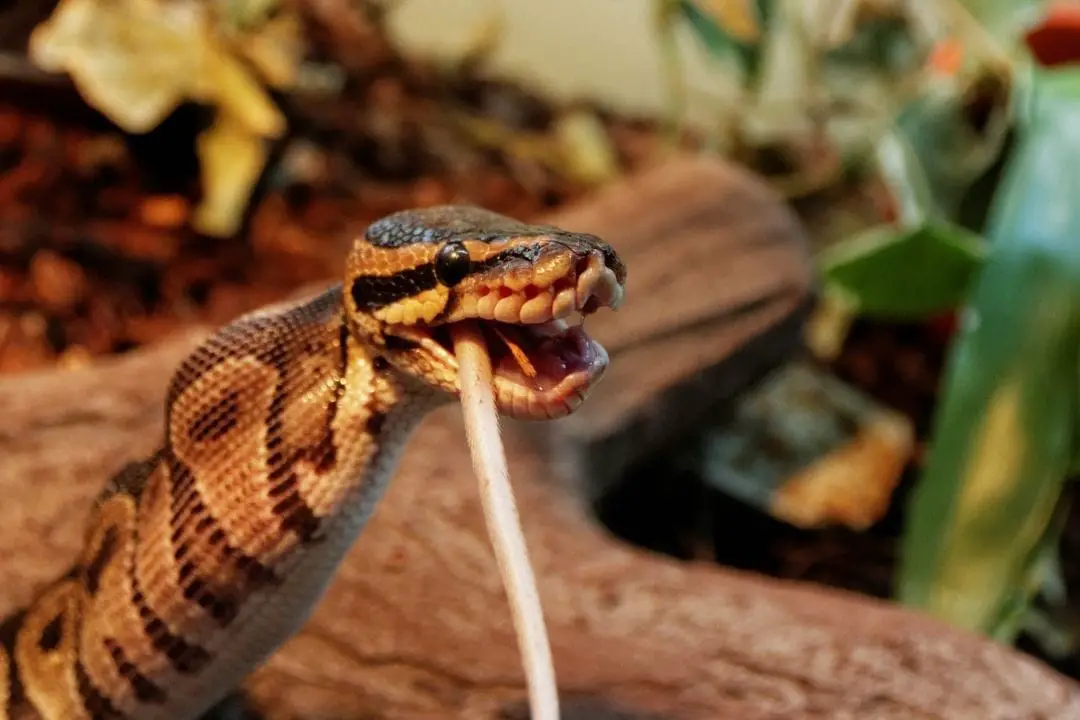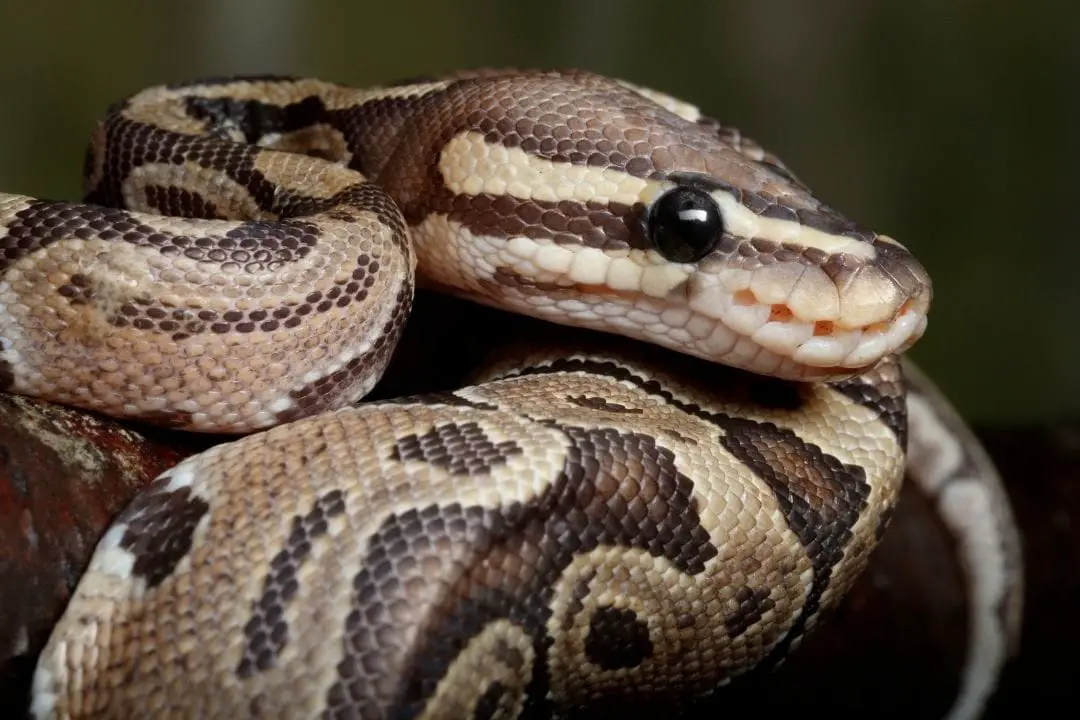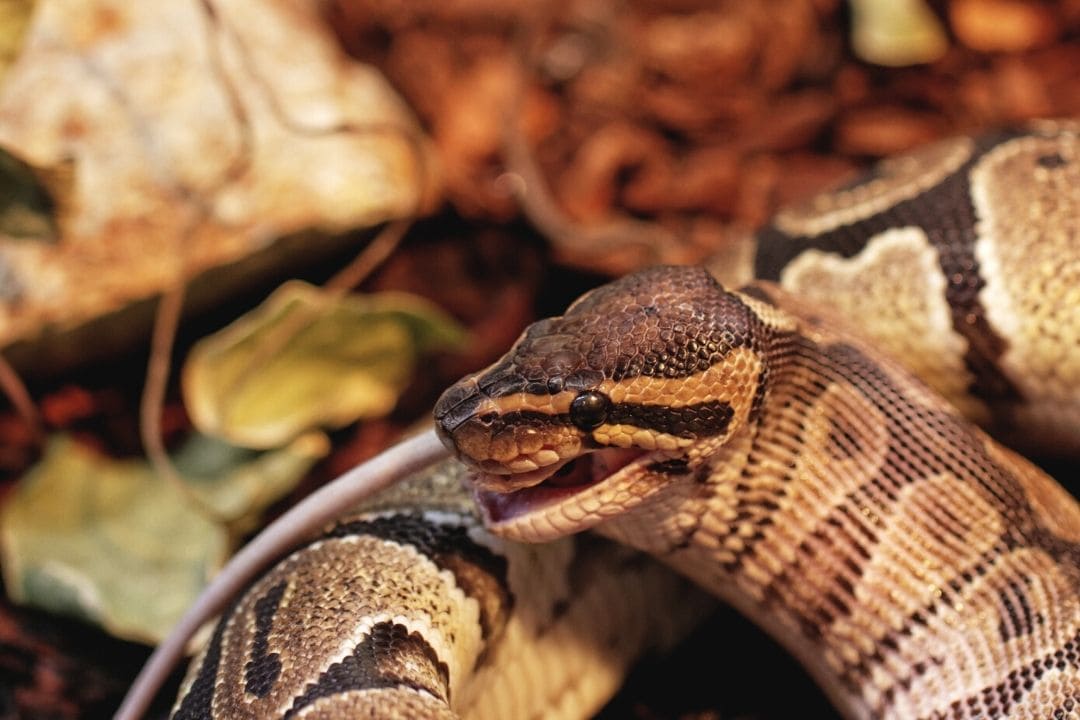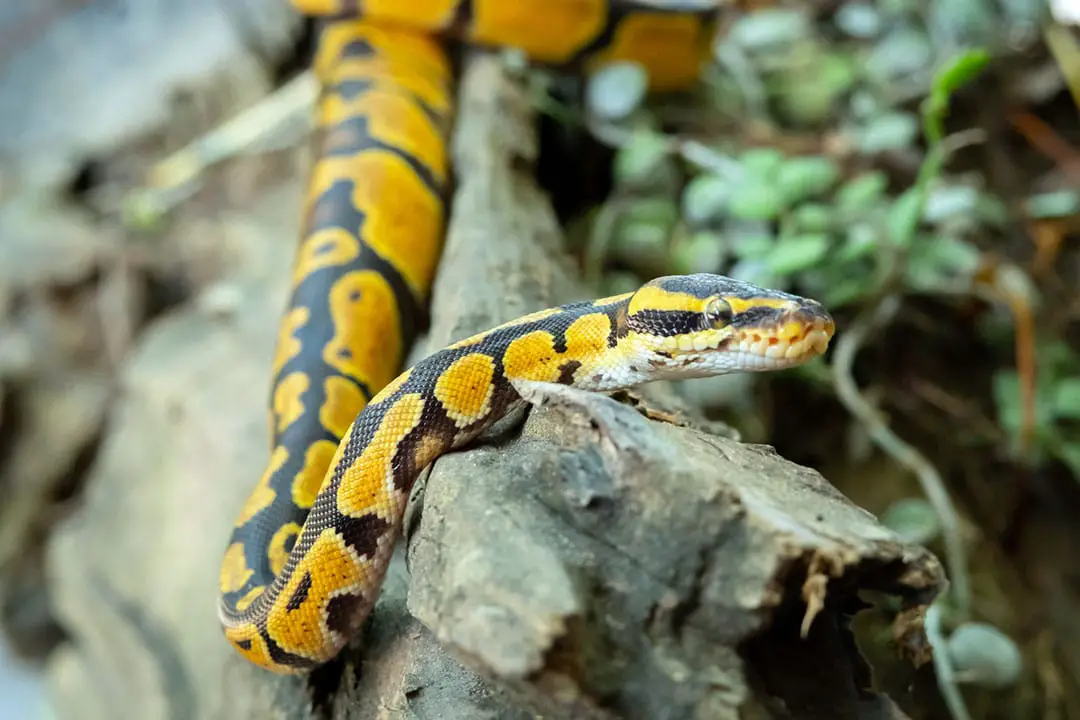Ball pythons (Python regius) are some of the most popular pet snakes in the reptile hobby. These docile snakes make wonderful pets thanks to a docile and curious personality.
The biggest care issue with these snakes is that they can be incredibly picky. Ball pythons are famous for going on regular feeding strikes that can worry their owners. Here are some reasons why your ball python won’t eat.
Ball pythons will often refuse to eat during the winter and many sub-adult females will go on a feeding strike. This is normal. You should only worry if your snake is losing weight. Then it is time to head to the vet.
1. It is Winter
No matter how well you warm up your home, many snakes will refuse to eat once it becomes colder. Lower light levels and colder temperatures will make snakes reluctant to eat.
While ball pythons do not brumate like other snakes, they do change their food intake during seasonal changes. If you are concerned, you can always take your snake to a reptile vet.
2. Poor Temperatures or Enclosure
However, snakes will not eat if the temperatures are too low. Ball pythons rely on their environmental temperature to regulate their internal temperature, and heating your enclosure right is a critical part of proper ball python care.
If they cannot raise their temperature enough, the snake cannot digest properly. This will lead to prey potentially rotting inside the snake.
If the temperatures are too low, your snake will not eat. Do not rely solely on the air temperature to tell if it is enough. Use a temperature gun to check the areas your snake spends time like its hides.
You want a temperature gradient so your snake can freely regulate its temperature. Make sure there isn’t too much light for your snake. Ball pythons are nocturnal so too much light will spook them. Never use a heat source that produces light. This will stress out your snake because of the light levels.
3. Stress
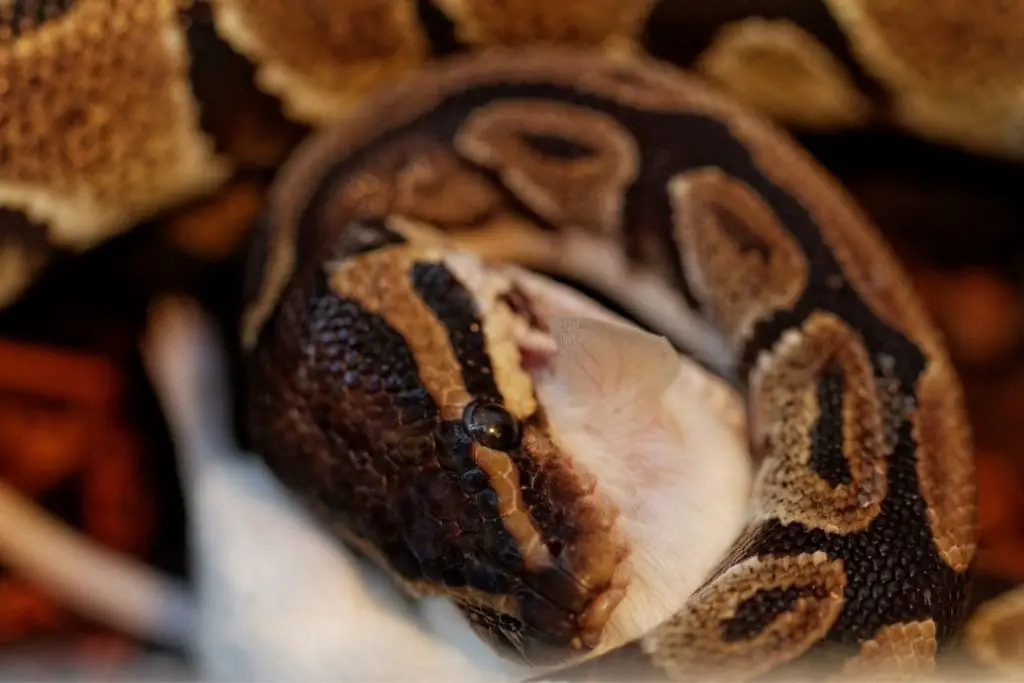
Stressed-out ball pythons will go on feeding strikes. New environments, new smells, and too much activity will make your snake refuse to eat.
You need to make sure your snake’s enclosure is set in a room that doesn’t get much activity. Make sure other pets like dogs and cats can’t access your snake.
Block the sides of the enclosure so the snake feels more hidden. Be sure you have at least 2 hides that will hold the whole snake and fill the enclosure so it isn’t empty.
Ball pythons are shy animals and need to feel secure. You may want to decrease handling if your snake shows signs of stress. If your snake balls up during handling, it is stressed and wants to be left alone.
Give your snake at least a week to relax before you try feeding it again. While snakes don’t have the best hearing, they can still hear vibrations very well. Loud music or similar sounds can stress out a snake.
4. How and What You Feed
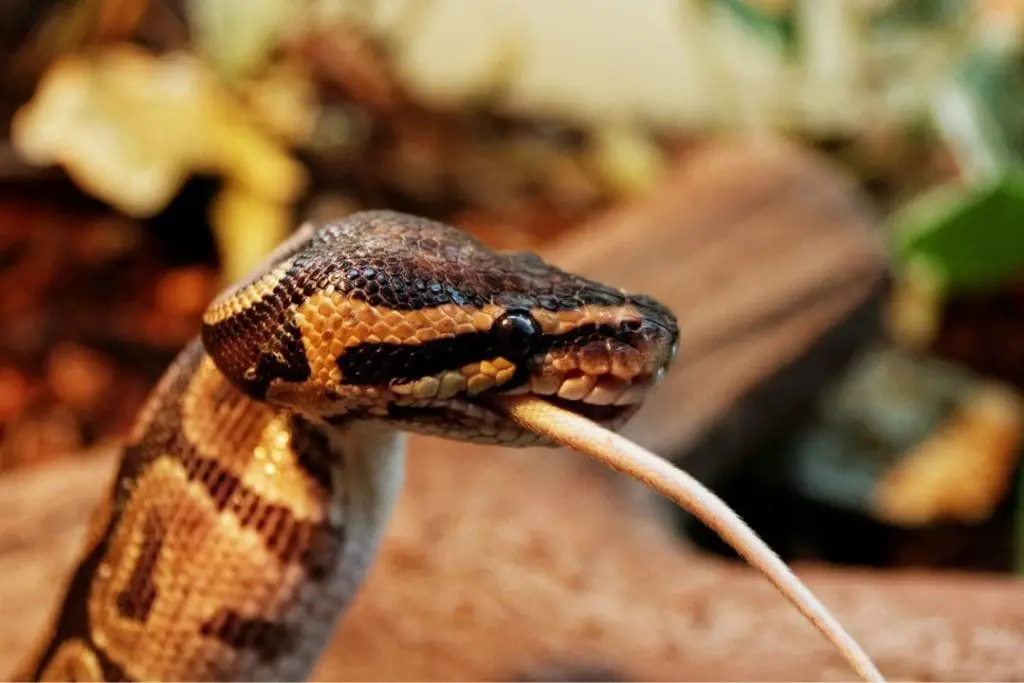
Ball pythons are incredibly picky eaters. If your snake only ate mice, it may be reluctant to take a rat even if it needs to size up to larger prey. Your snake may even be picky about the color of a mouse.
Wild-caught snakes may not recognize the common rat or mouse as prey since they are used to feeding on African rodents. They may also not recognize a typical white feeder mouse as food.
Try offering a different color of a mouse. Some snakes may also only take live prey or pre-killed. Time of day can also affect a snake’s appetite.
Ball pythons naturally feed in the evening or at night in the wild. Try offering a prey item right before you intend to sleep to help encourage your snake to eat.
It may take a while to figure out what your snake prefers. Ask the person you acquired your snake from and be patient. Ball pythons can go months without food as adults, so don’t panic if you miss a few meals.
5. Offering Food Too Often
Ball pythons typically have a slow metabolism. If your snake isn’t hungry, it won’t eat. Try to wait for your snake to show signs of hunting behavior.
You may see your snake roaming its enclosure as soon as the light levels start to drop. It may even be zooming around during the day.
If all the conditions are right, your snake may just be looking for a meal. This is a great time to try offering food since you know your snake is hungry.
6. Your Ball Python is Sick
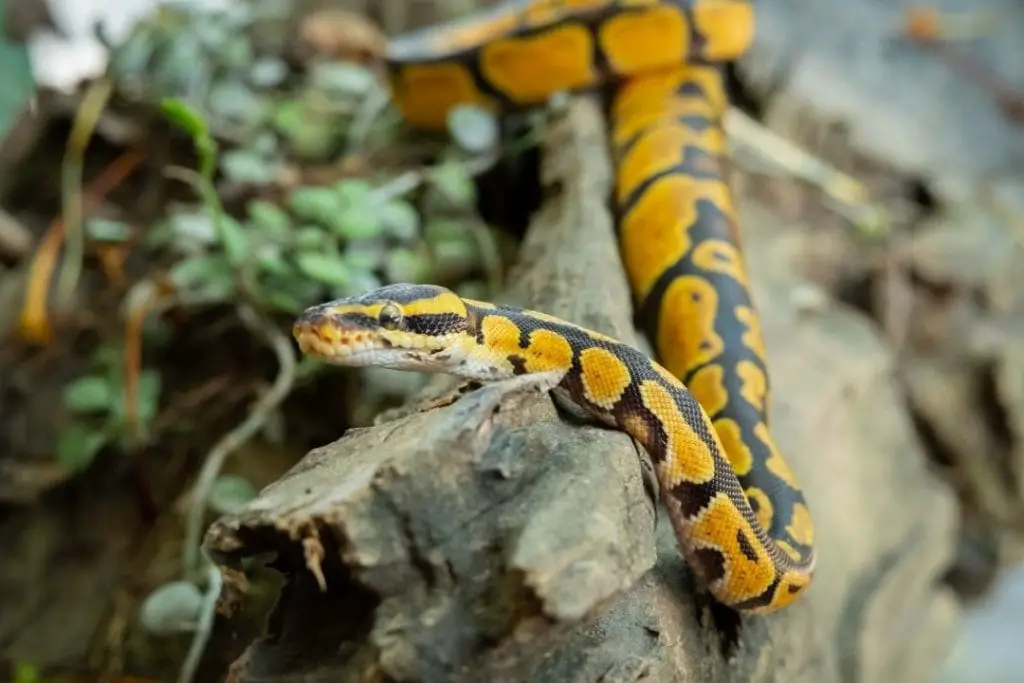
If your ball python is suffering from an illness, an infection, or parasites, it won’t want to eat. A sore mouth or a respiratory infection will likely leave your snake dealing with a reduced appetite.
Some parasites also reduce hunger or make it difficult for your snake to eat. If you feed live prey, your snake might have been attacked and has an injury.
If its mouth hurts, your snake won’t be willing to eat. Look for skin changes, pus, excess mucus, wheezing, and other behavioral changes. If your snake is ill, it needs to go to the vet so it will start eating again.
7. Shedding and Breeding
Most ball pythons will refuse to feed when they are shedding. Your snake can’t see to strike, and most show no signs of an appetite during shedding time.
Leave your snake alone and try to offer a meal after a successful shed. A snake that is ready to breed or has eggs to incubate will also refuse a meal.
This is completely normal. If your snake is losing too much weight, you can take the eggs away from a female and incubate them yourself to help trigger the mother to eat again.
Conclusion
Ball pythons can go off their food for a number of reasons. Check your conditions and try offering food later. If your snake is losing weight, be sure to see a reptile vet.
If you have any tips or questions, please leave a comment below.
Everything you need to know about caring for Ball Pythons in captivity:
Read our Ball Python Care Sheet (Complete Setup & Guide)
